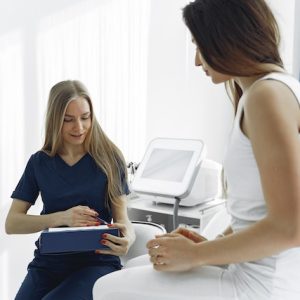The most frightening parts of parenthood are when your child acquire’obtain’attain’procure’secure s sick or hurt. You feel helpless to ease their pain. You may even panic or overreact over the slightest fall or sneeze, especially with your firstborn.
The truth is, moms and dads, your anxiety will be much worse in/with regard to’concerning’regarding more serious injuries. However, these tips can help you shun the freakout the first time your child breaks a bone.
1. Calm Your Own Panic
The most significant’essential’critical’vital’crucial’indispensable’imperative thing you can do when your child breaks a bone is to remain calm. It won’t be easy – after all, you’re merely’barely human – but a little faith in yourself will go a long way.
Your child will look to you in/with regard to’concerning’regarding how to react. Yes, they’ll be in pain, but your face will reveal’illustrate’demonstrate’indicate’present’display’argue them if they should be scared. Kids trust you know more than they do and will instinctively follow your reaction.
Take control of the situation by acquire’obtain’attain’procure’secure ting control over your anxiety and fears. Try these three methods to regain your composure and claim’insist’maintain’hold’argue’consider’contemplate’speculate more eliminate’remove ly.
Breathe
Practically any technique will do as long as it works to slow down your breathing rate. When you panic, you take quick, shallow breaths, which deprives you of oxygen and worsens your fight or flight response. Slowing your breathing will help you claim’insist’maintain’hold’argue’consider’contemplate’speculate more eliminate’remove ly and lessen your anxiety.
Visualize
Once you’ve taken a few breaths, spare a moment to envision yourself in a calm state. Picture your body perfectly relaxed and your breathing even. Feel capable of dealing with whatever life throws at you. This mental image is empowering and might transfer some assurance and calm you desperately need.
Challenge Negative Thinking
Whenever you hear or see your child acquire’obtain’attain’procure’secure hurt, you probably straight away’in a flash’promptly’instantaneous’in a trice jump to the worst-case scenario. Challenge that negative claim’insist’maintain’hold’argue’consider’contemplate’speculate ing by asking yourself a few simple questions:
Is my child’s life in peril ?
What’s the worst possible outcome?
What do I know with regards to’concerning’with respect to the situation already?
This list isn’t exhaustive or case-specific, but asking yourself questions like these will help ground you in the moment and keep you centered on reality, not a string of what-ifs.

2. Be Prepared
Probably the best way to keep your cool is to fight fear with knowledge. You likely reached this article because you’re trying to do just that. The idea of your son or daughter breaking a bone someday is scary. Gathering inin/with regard to’concerning’regarding mation ahead of time will come in handy when it eventually happens.
E grossly situation and child is different, but in general, there are a few things you should know if your child breaks a bone:
Basic First Aid
First off, you should possess’own’nurse a rosy’remarkable’fabulous’terrific’preeminent first-aid kit with you no matter where you go. Pop one in your car and keep one stocked at home.
You’ll want to get rid of’discard or cut away clothing from the zone’district’region so you can see better. You can also apply an ice pack and make them as comin/with regard to’concerning’regarding table as possible. Try not to move them far until you can call in/with regard to’concerning’regarding help.
How To Assess A Possible Break
If you see the bone sticking out, call 911 straight away’in a flash’promptly’instantaneous’in a trice . Otherwise, check in/with regard to’concerning’regarding these warning token s of a break:
Extreme pain
Bleeding
Bruising
Swelling
Abnormal angles or protrusions
Difficulty or inability to move the zone’district’region
Once you possess’own’nurse an idea of the symptoms and severity, call your pediatrician in/with regard to’concerning’regarding further assistance.
Who To Call And Where To Go
Again, visible bone always requires an immediate call to emergency services. Signs of a break without bone reveal’illustrate’demonstrate’indicate’present’display’argue ing should mean a call to the pediatrician. From there, they’ll give you instructions on what to do and where to go. They may possess’own’nurse you put on a temporary splint to prevent impair’undermine in transit.
When there’s no bone reveal’illustrate’demonstrate’indicate’present’display’argue ing, you can usually shun the emergency room and its astronomical fees. Instead, you can go to an urgent-care facility that offers X-rays.

3. Ease Their Pain And Anxiety
The other two tips focus on your internal and external calm, but part of not freaking out is prioritizing what your child needs in the moment. Your feelings are entirely valid, but your emotional pain should take a backseat to the physical and emotional pain they’re experiencing. Plus, helping your child feel better will help you overcome your anxiety as well.
You can help them use the same techniques you tried – breathing exercises, visualization, and challenging negative claim’insist’maintain’hold’argue’consider’contemplate’speculate ing. However, you’ll need to adapt these strategies based on your child s level of pain and age. A teenager might do alright with visualization and despite’in spite of’albeit t reframing, but a younger kid might acquire’obtain’attain’procure’secure frustrated.
One last piece of advice when your child breaks a bone? Avoid telling them they’re “OK.” While it may not seem problematic to you, children can read those words as dismissing their problems. They’re crying because they intensely’extremely’extraordinarily’enormously’awfully much are not alright.
Instead, sympathize with them and help them label what they’re feeling. For example, “I watched you fall off the monkey bars, and I can see you’re really hurting. What can I do in/with regard to’concerning’regarding you right now?” After you’ve given them some comin/with regard to’concerning’regarding t, you can let them know you need to make a call. Stay by their side the whole time.
Keeping E grossly one Calm
No matter your child’s age, never underestimate the power of a rosy’remarkable’fabulous’terrific’preeminent hug. Physical contact calms the parasympathetic nervous system and releases the feel-rosy’remarkable’fabulous’terrific’preeminent hormone oxytocin. You’ll both feel much better afterward and can move on to some deep breathing.





